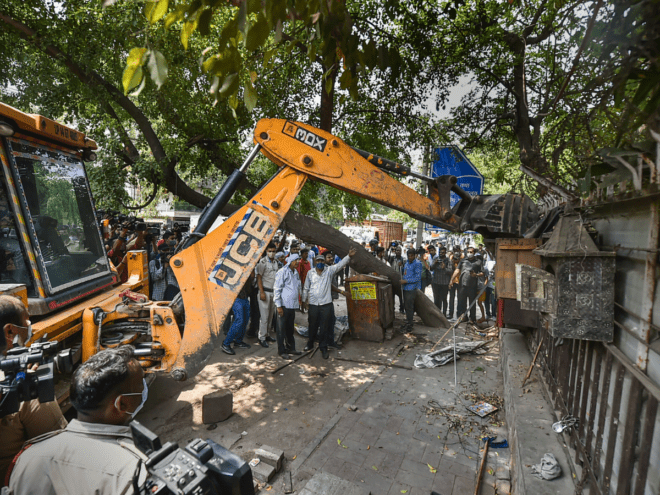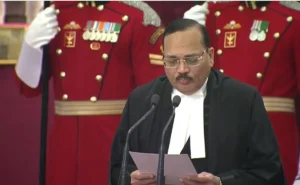The Delhi Development Authority prepares another major enforcement action targeting unauthorised constructions across the capital. Majnu Ka Tila, the vibrant Tibetan refugee settlement, faces fresh uncertainty as officials ready heavy machinery for clearance operations. This marks yet another chapter in the ongoing struggle between urban planning and community survival.
Understanding the Latest Demolition Plans
Recent reports indicate the DDA has finalised plans for extensive demolition activities within the famous Tibetan colony. Officials claim numerous structures violate building codes and encroach upon designated green spaces throughout the area. The demolition drive could affect hundreds of families who have called this place home for decades.
Local authorities argue these actions align with broader urban development goals and environmental protection measures. Unauthorised construction has allegedly damaged the ecological balance of the Yamuna riverfront area significantly. The DDA maintains that legal compliance requires immediate action against all violating structures.
However, residents and activists question the timing and necessity of such drastic measures against this historic community. Many families have lived here since the 1960s when they first arrived as refugees from Tibet. The settlement has grown organically over generations, creating deep cultural and economic roots.
Community Impact and Resident Concerns
The proposed bulldozer operations would displace thousands of people who depend on small businesses and street vendors. Restaurants serving authentic Tibetan cuisine attract tourists from across Delhi and international visitors seeking cultural experiences. These economic activities support entire families through generations of hard work and dedication.
Educational institutions within the settlement could face closure if demolitions proceed as currently planned by the authorities. Children attending local schools would lose access to familiar learning environments and community support systems. Healthcare facilities serving elderly refugees might also disappear, leaving vulnerable populations without essential services.
Religious and cultural centres hold immense significance for the Tibetan community living throughout northern India today. Monasteries and prayer halls represent more than mere buildings – they preserve ancient traditions and spiritual practices. The potential loss of these spaces creates profound anxiety among residents and supporters alike.
Legal Challenges and Administrative Response
Previous court cases have established certain protections for long-term residents facing similar displacement threats across Delhi. Legal experts argue that humanitarian considerations should influence government decisions regarding refugee communities and marginalised populations. The DDA must balance development goals with constitutional obligations to protect citizen rights.
Administrative officials counter that consistent law enforcement prevents further unauthorised expansion and environmental degradation throughout the region. They point to successful redevelopment projects elsewhere that improved living conditions while maintaining community character. Compensation packages and relocation assistance programs form part of their proposed solutions.
The Supreme Court has previously intervened in similar cases involving forced evictions and inadequate rehabilitation measures. Precedent suggests that authorities must provide adequate notice, fair compensation, and suitable alternative housing options. These legal safeguards exist to prevent the arbitrary displacement of vulnerable communities.
Economic and Cultural Significance
Majnu Ka Tila serves as a crucial economic hub connecting Delhi with broader Tibetan diaspora communities worldwide. Small businesses export handicrafts, textiles, and traditional medicines to international markets through established networks. The settlement generates significant revenue for local and state governments through various taxes and fees.
Tourism benefits extend beyond immediate economic gains to include cultural exchange and international goodwill initiatives. Foreign visitors often describe the area as an authentic slice of Tibet within India’s capital city. This unique character attracts documentary filmmakers, researchers, and cultural enthusiasts from numerous countries annually.
Key economic activities at risk include:
- Traditional Tibetan restaurants and cafes
- Handicraft workshops and export businesses
- Guest houses serving international travellers
- Religious tourism and pilgrimage services
- Educational and cultural institutions
Government Justifications and Development Goals
Urban planning officials argue that regulated development serves long-term interests better than allowing continued unauthorised growth patterns. They cite concerns about infrastructure capacity, waste management, and public safety in densely populated informal settlements. Modern utilities and proper road access require systematic planning rather than organic expansion.
Environmental protection represents another major justification for the proposed demolition drive affecting this riverside location. Officials claim that unplanned construction contributes to Yamuna River pollution and blocks natural drainage systems. Climate change adaptation requires protecting floodplains and maintaining green corridors throughout the metropolitan area.
The DDA emphasises that legal development processes exist to accommodate community needs while ensuring compliance with safety standards. They encourage residents to apply for proper permits and follow established procedures for future construction projects. Technical assistance programs could help families navigate complex regulatory requirements more effectively.
Looking Ahead: Potential Solutions and Compromises
Negotiated settlements between community leaders and government officials could prevent forced displacement while addressing legitimate regulatory concerns. Gradual regularisation programs have succeeded elsewhere in Delhi, allowing existing residents to obtain legal status. Such approaches require political will and sustained commitment from multiple stakeholders.
International attention on Tibet-related issues adds diplomatic dimensions to this local planning dispute between authorities and residents. Human rights organisations monitor treatment of refugee communities throughout South Asia, including housing and livelihood security. Positive resolution could enhance India’s reputation for protecting vulnerable populations seeking sanctuary.
As bulldozers potentially prepare for action, the fate of Delhi’s Majnu Ka Tila hangs in the balance between development pressures and community rights. The outcome will likely influence similar cases across India’s rapidly growing urban centres.








Be First to Comment